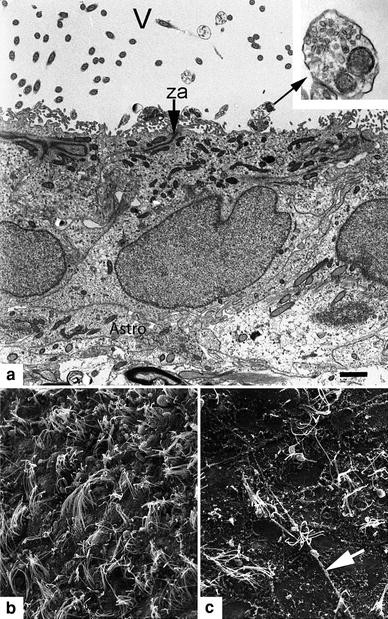What Are the Causes of Ependymal Cells?

Ependymal cells are the cells that line the blood vessels. They help the body to transport blood and nutrients throughout the body. In the process, they can also cause problems.
When you get an injury to a blood vessel, the first thing that happens is the blood gets pressed against the walls of the vessel and clots. This happens because the blood cell is stuck to the blood vessel walls. If you have blood clotted in your blood vessels, you will have a bleeding condition called a thrombosis. If the clot is very big, it can stop the normal flow of blood from one part of the body to another.
The more clots accumulate, the more the blood stagnates. This means that the blood cannot be pumped out, your body begins to lack oxygen. This leads to a condition called hypoxemia, which is why most people with chronic obstructive pulmonary disease (COPD) experience shortness of breath and feel exhausted.
There are various diseases that can be caused by the accumulation of blood clots. Some of these conditions include heart attacks, strokes, aneurysms, liver disease, kidney problems, respiratory diseases, and tumors. Ependymal cancer is another of these diseases. The problem with cancer cells is that they tend to spread into the lungs, where they can begin to form. If left untreated, they can spread to other parts of the body and the patient is more likely to develop cancer.
The good news is that ependymal cells are relatively easy to remove. If you have been experiencing pain and fatigue for some time and want to resolve this problem, you should consider surgery. If surgery has failed and pain and fatigue still persist, you should consider non-surgical options.
Surgical procedures are available to remove clots in the body. The most common surgical procedure is intramural vein thrombosis. This type of procedure involves removing the affected vein through a small incision. Another procedure is chest vein thrombosis procedure. This involves removing the affected vein through a large abdominal incision.

Both of these procedures are safe and effective. Once you have had the procedure, you can expect that your veins will never return and you will no longer have problems with your circulation.
You can also look into non-surgical treatments if you feel that the surgical treatment has failed to bring about the desired results
These are natural ways of treating your clot problems.
One of these is the use of anti-coagulants. There are some people who find these useful to reduce the symptoms of aneurysm, stroke, or pulmonary embolism. Anti-coagulants can be used to reduce the thickness of the blood vessels, which in turn helps in stopping or slowing down the progress of the disease.
Other natural herbal treatments can help in preventing the growth of abnormal cells in the body. Some of these are Echinacea and St. John's Wort. Echinacea helps in treating the anemia that results from the accumulation of too many abnormal cells.
Green tea is another natural herb that helps in lowering the amount of platelets and other blood cells that build up. It also reduces the levels of calcium in the blood, which can be important because it helps prevent osteoporosis.
In addition to surgical treatments, you can also opt to take vitamins and nutrients supplements that can help the body fight off these cells. Drinking green tea and eating foods rich in antioxidants can help in this process.
